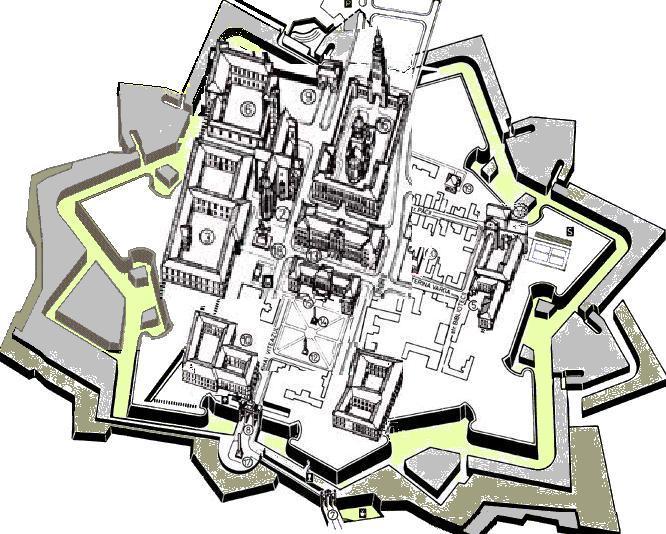|
Alba Iulia is an anciest town, a Dacian settlement named Apulum.
Citadel Alba Carolina
(1714 - 1738)
The citadel
has walls along 12 km.
There
are 6 gates-entrances, 4 of them having statues and bas-relief decorations.
The
fortress has 7 bastions.
There are
historic palaces and cathedrals inside the citadel.
You can click
on each building on the map to get details about it.

|
The Crown Orthodox Cathedral (1921)
is also known as the Cathedral of National Reunion.
It has roman architectonic elements inspired from Domneasca Church
on Targoviste.
|
|
|
The Roman-Catholic Cathedral (1246-1291).
One of the most valuable medieval monument in Transylvania and
one of the most ancient in Romania.
In the Cathedral are the remains of Huniad prince family.
The architectural style include gothic, romaine and baroque.
|
|
|
The Union Museum (Babilon) (1853).
It is the most important romaine palace from the town.
Here is a link where you can find pictures
from the museum.
|
|
|
The Union Hall (1898)
Here took place the National Union on 1 December 1918.
It hosts an ethnographic exhibition.
|
|
|
"Batthyaneum" Library (1719)
A collection of medieval books and art.
Apor Palace (17th Century)
The residency of one of the wealthy medieval families.
|
|
|
The 1st Citadel Gate
The gate has the Triumph Arch shape. The Arch has three entries.
On the top of the Arch there are Venus (beauty symbol) and Mars
(war symbol) and in the middle is Austrian blazon.
There are also some mythological bas-reliefs.
|
|
|
The 3rd Citadel Gate
Have bas-relief scenes on the interior and exterior sides.
The statue of Carol VI is on the top.
The interior façade has 4 statues representing: the Abundance,
The Wisdom, The Temperance and The Force.
|
|
|
The 4th Citadel Gate
This gate is on the West Side.
The decorations include the Atlantis statue, the Fury statue, weapons,
trophies and flags.
|
|
|
Academic College (17th
Century)
Here has exist since 1622 the Academicum Colegium.
Nowadays here is "1 December 1918" University.
|
|
| |
|
The Roman-Catholic Episcopal Palace (1715)
In his architecture is predominant the Transylvanian Renaissance style.
The Transylvanian Princes Palace (16th Century)
The Commissariat Palace (18th
Century)
Custoza Monument (1906)
Losenau Monument (1853)
Horea, Closca and Crisan Obelisque (1937)
|